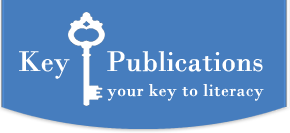It's important to be able to read the words. It's equally important to understand what the text is all about.
Comprehension means understanding. When applied to reading, it means understanding what we are reading. It is one of the basic skills of reading and the reason we read: to find enjoyment or to obtain knowledge.
Comprehension of reading needs to be prectised by young learners until they get the idea we don’t just read the words but go a step further and understand what we are reading as we read. They need to know the meanings of words and that these meanings can vary from story to story or context to context.
There are children who find reading the words difficult, and may stumble over every word, but they know what is happening in the story. There are other children who can read fluently but have no idea what the words are telling them. For the former category, there is no need to improve their comprehension. There is a need, however, to improve their ability to read the words. For the latter category, the technique that follows may prove invaluable in helping them to comprehend what they are reading.
You’ll find this comprehension technique explained fully in Now Read This:
Have the child read a paragraph of a story that is not too hard, not too easy, but just right for her to read. We’ll say, for this exercise, the child is female, which will save us writing he/she throughout. Before she begins, tell her you are going to take notes while she is reading and when she has finished, you are going to retell the story in detail from your notes. Tell her she has to say whether you are correct in your retelling. Here’s the trick: she will have to be listening to herself read in order to know whether your retelling is correct.
Have her read aloud. While she is reading, take notes. Keep them brief. They may be pictures or the occasional word – anything that will remind you of the story. It’s best to use pictures when you can because what you are trying to do is get her to picture what is happening in the story in her mind.
You retell the story in detail from your notes when the reading is finished.
Now swap roles. You read and she takes notes. You may have to stop at the end of each sentence to allow her time to do her drawings or write the words she needs to write. Discourage her from writing too many words. Encourage her to draw pictures. When you have finished reading, she retells the story in detail from her notes.
You may have to repeat this exercise for a few minutes each day for the first week. Then try it once a week for the next two to three weeks. In most cases, the problem of poor comprehension is solved because she is now able to picture the story as she is reading.
